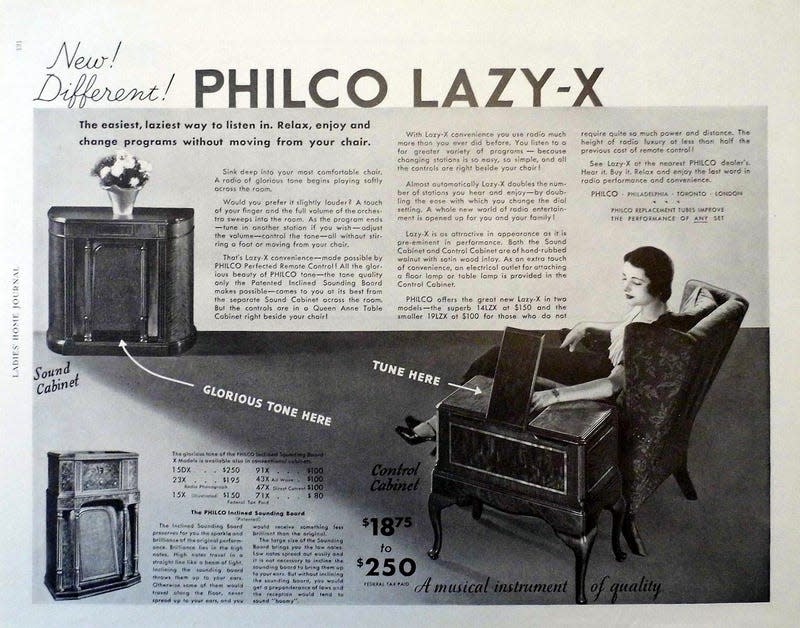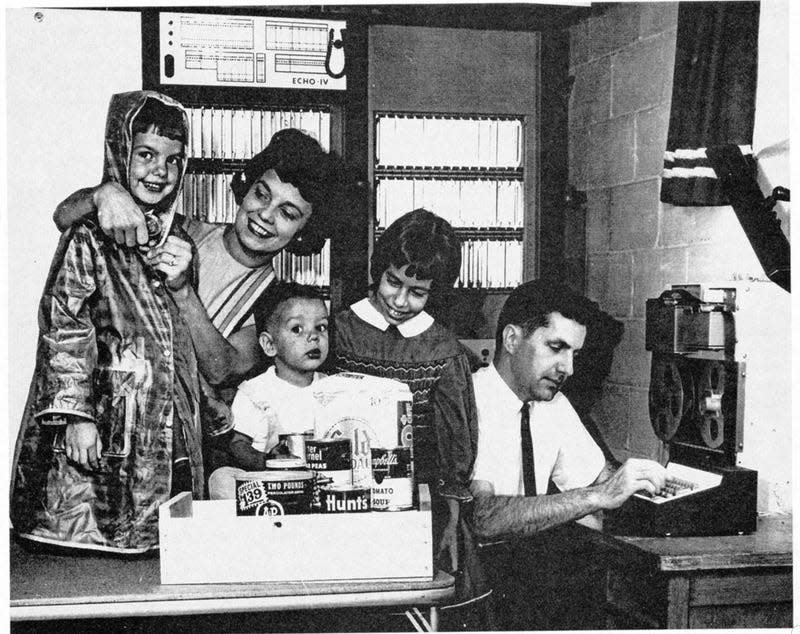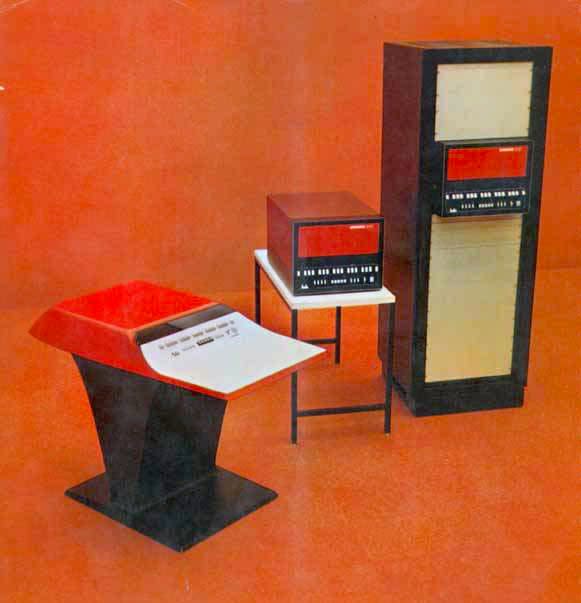8 innovations that prepared us for contemporary smart homes
The home of the future, it would seem, has arrived. We can speak to the air and magically turn on music, set a timer, or listen to the weather forecast. A touch of a button on a mini-supercomputer in our pockets can lock our door, set our alarm, and turn the light to just the right dimness.
But today’s smart homes had a long journey before they got a tech upgrade, and some might dispute that they’re even all that smart. There’s a storied history of innovations that put automation into homemaking.
Read more
Learn more about smart homes in episode 2 of season 5 of the Quartz Obsession podcast, out now!
Listen to “Smart homes: Built to crash” wherever you get your podcasts: Apple Podcasts | Spotify | Google | Stitcher | YouTube
When home appliances became automated
Household electrification in Europe and North America started rolling out in the late 19th century and early 20th century, enabling the first electric home appliances. By 1925, about half of US homes had electricity and in the 1930s, two thirds of British households were on the grid.
The refrigerator, washing machine, and vacuum cleaner gained widespread adoption in the US during the early to mid-20th century.
The first mass-marketed refrigerator debuted in 1913, but they didn’t become a common feature of American homes until the 1930s. The exact inventor of the electric washing machine is disputed, but the Automatic Electric Washer Company began manufacturing early units in 1907. It wasn’t until the 1950s, however, that they became a mainstay in the average American home.

The origins of remote controls
The idea for remote controls was around long before they became strewn across everyone’s home coffee tables. In 1893, inventor Nikola Tesla demonstrated a device that could send and receive radio transmissions in front of the National Electric Light Association in St. Louis.
The device wasn’t intended for use in homes, but rather for military applications. In 1898, Tesla gave another demonstration of the device controlling what he termed a “teleautomaton,” a kind of remote-controlled boat.
Remotes became a feature in homes in the 1940s when devices were created to automate the opening and closing of garage doors. But it wasn’t until 1950 that the first television remote was created by Zenith Radio Corporation. Dubbed the “Lazy Bone,” the device could turn the TV on and off and flip channels, though it required a physical cable to operate. In 1955, Zenith debuted the “Flash-matic,” the first wireless TV remote.

The first home computer is created
ECHO IV marked the invention of the first actual smart home device. Invented by James Sutherland at Westinghouse Electric, the giant computer, made up of four cabinets, took up an entire room and weighed 800 pounds.
Sutherland designed it to be fully integrated into the home, placing keypads and control panels across different rooms to control a variety of functions. ECHO IV, which roperated for a decade, was able to control the TV, alarm clocks, stereo, thermostat, air conditioning, and even log the family’s finances.
While not commercially available, Sutherland’s invention was an impressive piece of smart home technology that preceded similar devices by decades.

The first cooking app (kind of)
Just years after ECHO IV was released, engineering giant Honeywell debuted a kitchen computer that promised to make cooking a breeze. Released as the H316 Pedestal Model, the 16-bit kitchen computer was able to store recipes and came with several pre-programmed. It also came in three different versions, one of which included a built-in chopping board right in front of its display.
The kitchen computer didn’t exactly fly off the shelves—its weight, at 100 pounds, would’ve complicated things. Its novelty and wacky design may have put off consumers, but in all likelihood it was the price tag that kept interested parties at bay. The product featured in the Neiman Marcus Christmas catalog for a whopping $10,000.
Not a single unit of the device was ever sold, but the concept was ahead of its time and, perhaps, foreshadowed some of the goofier products on the market today.
The X10 protocol finds connection
A real game-changer for smart home devices came in 1975 with the development of X10. The communication protocol made it possible for smart devices, for the first time ever, to communicate with one another. The technology was created by a group of engineers at Pico Electronics, located in Glenrothes, Scotland, in the 1970s, and relied on a home’s AC wiring to function. The new technology unlocked the ability to connect multiple devices in one’s home together.
X10 became an industry standard, hitting the US market in 1978 first in partnership with RadioShack. The protocol was used to operate RadioShack’s iconic “Plug ‘n Power” device, and the Sears “Home Control System.” X10 wasn’t a perfect system—it could be slow, unstable, and lacked encryption—but it paved the way for the contemporary smart home market.
The rise of the Internet of Things
Skip forward a couple decades and the smart device market has grown considerably. Throughout the ‘80s, products like motion sensor lights and programmable home security systems entered the mainstream. In 1984, the American Association of Home Builders coined the term “smart house.”
When the ‘90s rolled around, a new concept called the “internet of things” (IoT) was developed. The idea was that objects could contain the ability to transmit and receive data over a network. In 1990, computer scientists John Romkey and Simon Hackett teamed up to create the first IoT device in the form of an internet-connected toaster. The term, however, wouldn’t be coined until 1999 by computer scientist Kevin Ashton.
WiFi was invented in 1997. Other wireless protocols like Bluetooth, Z-wave, and ZigBee also emerged in the ‘90s and were refined in the early 2000s. These network protocols broadened the possibilities and diversity of smart devices. Microsoft’s prescient vision of a smart home, released in 1999, forecasted many of the future functions in contemporary smart homes, like touch screen panels, push notifications sent to handheld devices, and even retinal scanners used for doors.
The smart speaker makes its way in
In the 2010s, Big Tech companies like Amazon, Google, and Apple started competing to create the next big smart device to capture the market.
In 2014, Amazon debuted the Echo—you know its voice-activated assistant Alexa— and generated instant buzz. Apple released its HomeKit the same year, an all-in-one app that could control different functions within a home with a device like an iPhone or iPad. Google followed up in 2016 with its smart speaker Google Home (now called Google Nest) with its own built-in voice assistant, going head-to-head against Amazon.
The AI revolution has arrived…
The future has arrived, but smart homes are not really smart (yet).
The contemporary smart home landscape has its fair share of issues, spanning privacy, security, and interoperability. A world of connected IoT devices has become a reality, but it does not function as seamlessly as one might expect, nor does it necessarily bring convenience to people’s lives.
That said, the market is growing. An estimated 130 million homes worldwide contain a smart device, according to Statista, while the market is expected to be worth nearly $223 billion by 2027.
The next innovation on the horizon for smart devices is the integration of language models, like ChatGPT, with virtual assistants. One US company, Josh.ai, is already using the technology to build its own assistant, and last year, Amazon announced it is working on a large language model that could be used to improve Alexa. If successful, smart homes could reach an entirely new level of intelligence—the question is whether consumers, and even tech innovators, are ready for it. Or even want it.
Learn more about smart homes in episode 2 of season 5 of the Quartz Obsession podcast, out now! Listen to “Smart homes: Built to crash” wherever you get your podcasts.
Apple Podcasts | Spotify | Google | Stitcher | YouTube
Or, read the transcript.
Related stories
🤖 Why smart homes aren’t smart (yet)
🥊 Inside Amazon, Google, and Apple’s fight to build the smart home of the future
🗣️ It only took Alexa five years to take over our lives
🙅♀️ 18 things that have no business being connected to the internet
More from Quartz
Sign up for Quartz's Newsletter. For the latest news, Facebook, Twitter and Instagram.


